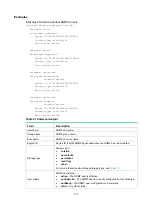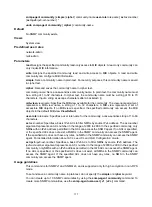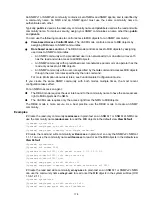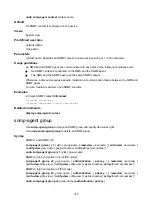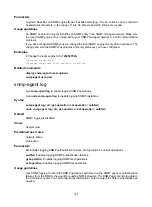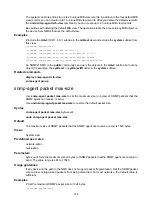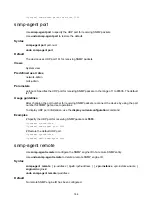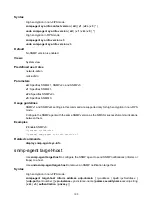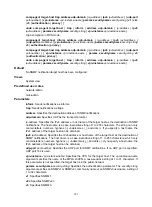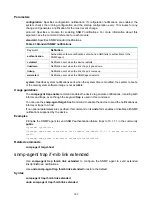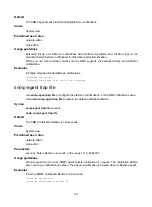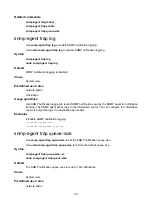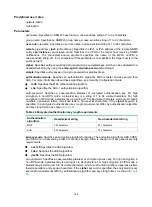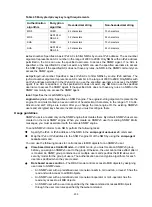
187
Views
System view
Predefined user roles
network-admin
mdc-admin
Parameters
ip-address
: Specifies the IP address of a remote SNMP entity.
ipv6
ipv6-address
: Specifies the IPv6 address of a remote SNMP entity.
vpn-instance
vpn-instance-name
: Specifies the VPN for a remote SNMP entity. The
vpn-instance-name
argument specifies the name of the MPLS L3VPN, a case-sensitive string of 1 to
31 characters. If this option is not specified, the remote SNMP entity is in the public network.
engineid
: Specifies the SNMP engine ID of the remote SNMP entity. This argument must be a
hexadecimal string that contains an even number of characters, in the range of 10 to 64. All-zero and
all-F strings are invalid.
Usage guidelines
To send informs to an NMS, you must configure the SNMP engine ID of the NMS on the SNMP
agent.
The NMS accepts the SNMPv3 informs from the SNMP agent only if the engine ID in the informs is
the same as its local engine ID.
You can configure up to 20 remote SNMP engine IDs.
Examples
# Configure the SNMP engine ID (
123456789A
) of the SNMP manager (10.1.1.1).
<Sysname> system-view
[Sysname] snmp-agent remote 10.1.1.1 engineid 123456789A
Related commands
display
snmp-agent
remote
snmp-agent { inform | trap } source
Use
snmp-agent
{
inform
|
trap
}
source
to specify a source IP address for the informs or traps sent
by the SNMP agent.
Use
undo snmp-agent
{
inform
|
trap
}
source
to restore the default.
Syntax
snmp-agent
{
inform
|
trap
}
source
interface-type
{
interface-number
|
interface-number
.
subnumber
}
undo
snmp-agent
{
inform
|
trap
}
source
Default
The SNMP agent uses the IP address of the outgoing routed interface as the source IP address of
notifications.
Views
System view
Predefined user roles
network-admin

